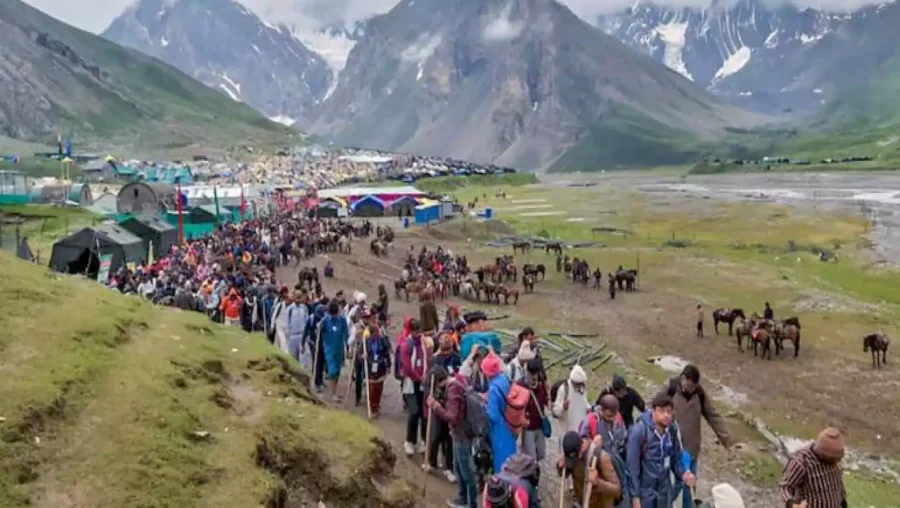The All Parties Hurriyat Conference (APHC) has expressed concern over the environmental threat posed by the large-scale Amarnath Yatra in Indian illegally occupied Jammu and Kashmir, urging immediate international intervention.
According to Kashmir Media Service, APHC spokesman Advocate Abdul Rashid Minhas in a statement in Srinagar stated that the annual influx of hundreds of thousands of Hindu pilgrims from Indian states severely impacts IIOJK’s fragile ecosystem. He highlighted issues such as glacier melting, heightened flood risks and pollution resulting from the Hindu pilgrimage.
He criticized New Delhi for depriving Kashmiri Muslims of their rights, including restrictions on performing Friday and Eid prayers, while providing extensive security and facilities for Hindu pilgrims.
The spokesman urged the international community to press India to impose strict limits on the duration and scale of the Yatra to protect Kashmir’s environment. The 52-day Amarnath Yatra began today and will continue until August 19.
He said that the Indian government is ignoring the threat to the environment of the occupied area as a result of the pilgrimage, which is very sad.
The APHC spokesman said that the international community should take immediate notice of the danger posed to the environment of Jammu and Kashmir by the Amarnath Yatra and put pressure on India to reduce the duration of the pilgrimage and limit the number of pilgrims to save the environment of the region.
The Indian government’s decision to proceed with the massive Amarnath Yatra amidst growing environmental concerns has ignited widespread criticism and fears of irreparable harm to the fragile ecosystem of Indian illegally occupied Jammu and Kashmir (IIOJK).
According to Kashmir Media Service, environmental critics and experts have voiced alarm over the significant threats posed by the large-scale pilgrimage to IIOJK’s environment, already strained by climate change impacts.
They argue that the Modi regime is turning a blind eye to the environmental risks associated with the massive influx of Hindu pilgrims to the Amarnath Cave in south Kashmir. They warn that the current form of the pilgrimage could lead to long-term ecological damage in the Himalayan region.
Furthermore, critics and experts have lambasted the Indian government for militarizing the Amarnath Yatra, deploying extensive forces’ personnel that not only intensify environmental pressures but also exacerbate tensions among the local Kashmiri population.
They expressed concerns that the Yatra not only endangers Kashmir’s fragile environment but also serves as a tool of cultural and political subjugation of the Kashmiris by India.
Environmental experts caution that the concentration of hundreds of thousands of Yatris in Kashmir significantly impacts the delicate Himalayan ecology, potentially accelerating issues such as glacier melting and heightened flood risks.
Advocating for urgent international intervention, they urge India to impose strict limits on the duration and scale of the Yatra to protect Kashmir’s unique and vulnerable environment. They stress that the Amarnath Yatra, if unchecked, could accelerate environmental degradation in Kashmir, affecting local communities and regional biodiversity, as well as critical water resources.—KMS










